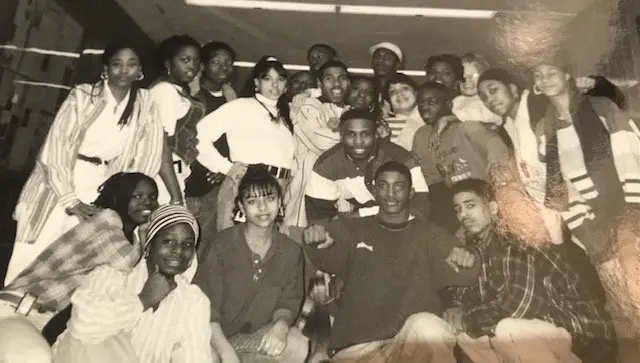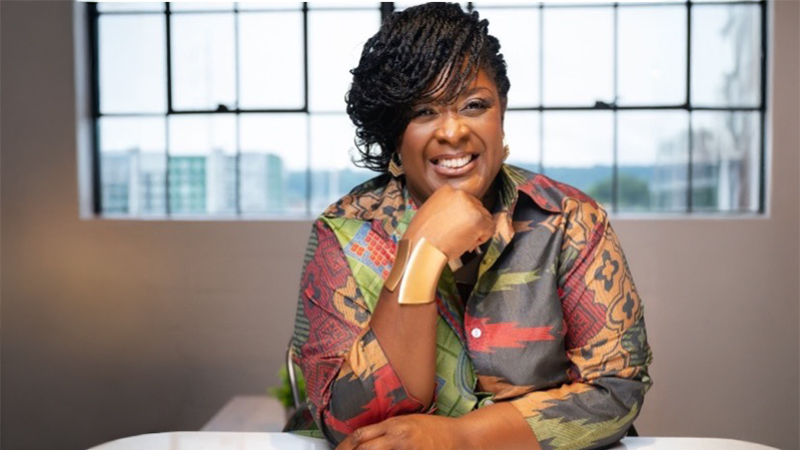Leading While Black: Negotiating Race and Role in School Leadership


I still vividly recall where I was when our country was attacked by terrorists on Tuesday, September 11, 2001. It was my fifth day as a new principal. My role was to authentically care for and protect my school community and serve as their voice, their advocate, and their shield from a world that was, at times, hateful and harmful to them. On that day, we as a country coalesced against a similar enemy, an external enemy that attacked and threatened who we were as Americans.
As a Black man, leading in urban schools, I have often encountered spaces where the hate and harm visited upon the most vulnerable members of my school community came from within the walls of the systems that should have been protecting them. My role as advocate and shield took on an even deeper meaning. I had to negotiate my racial identity and the roles and responsibilities I held while perfecting the delicate and deliberate dance of balancing the “person” and the “position”. This is a critical balance that leaders of color must get right if they are going to be successful in leadership at scale.
The Facilitator and the Educator
When I entered the education profession as a high school English teacher in the Bronx, it was instantly clear to me that it mattered to my students that I was there. I was a 22-year-old Black man in a school where over half of the students identified as Black. My English classroom became a haven; a hangout; a sanctuary; a Socratic seminar for my students whom I immediately began to expose to the writings of Toni Morrison, Langston Hughes, Nikki Giovanni, Lorraine Hansberry, Chinua Achebe; Frederick Douglass, and Sojourner Truth.
Surprisingly, some of the texts by these authors were in the book closet, unused. The spines of the books cracked when I opened them. In the face of vehement disapproval of my department chair, I selected these texts so that my students would get access to a wider range of literary experiences. I also faced the scorn of union leaders because I allowed the guidance counselors to exceed the 30-student class cap in my African-American Literature elective because it was the only course of its type.Although we may have been physically uncomfortable; with upwards of 38 students, those classes were the bright spots in our collective days. I soon began to realize that the rules that guided my actions as a person would often be in conflict with those expected of my position.

Although we may have been physically uncomfortable; with upwards of 38 students, those classes were the bright spots in our collective days. I soon began to realize that the rules that guided my actions as a person would often be in conflict with those expected of my position.
The Liberator and the Administrator
This realization followed me into school leadership when I became an assistant principal at the middle and high school. Adolescents are often in a place developmentally where they challenge the authority of adults. This is especially true in systems that seem overly controlling and punitive; as schools can sometimes be. This tension is further exacerbated when the adults in control are predominately White in school communities that are predominately students of color. I found that as a Black school administrator, I had a special way with the young people in my care.
"I was sometimes accused of being ‘too much on the student’s side’ in those conversations. To which I would often respond, ‘I thought we were all on the student’s side.’”
I was able to approach them and speak to them directly and use language, tone, and cultural references that allowed me to get greater levels of cooperation than some of my colleagues. I was able to speak to them in a manner that de-escalated conflicts when they were in crisis or in a place of heightened anger or anxiety. This served to reduce the frequency of high-level consequences like suspension and expulsion because students were able to be redirected in the moment.
One of the ways I was most intentional was in responding to students who were repeatedly kicked out of classrooms or who got up and walked out due to escalating conflicts with teachers. I observed that there was such a low level of respect and trust between students and their teachers; that they didn’t talk to, listen to, or care about each other. Instead of moving directly to suspension for these infractions, I began to coach students on how to share feedback with teachers on the impact of their interactions and hold mediation sessions as the intervention instead.
For the first time, teachers sat and listened to students in a way that helped them see how their own behaviors were contributing to the student reactions and students were able to open themselves up to the reality that their teachers actually cared about them and were there to support them and see them be successful. I must admit, not all of my colleagues were open to sitting across the table and explaining themselves to teenagers whom they felt were beneath them and should just follow the rules.

Leveraging my understanding of my students, as a person who knew their experiences, shaped my actions as an assistant principal and reduced the number of suspensions and expulsions. This is critical because these pervasive in-school punishments and consequences, disproportionately visited upon students of color, often begin to shape a young person’s perception of themselves and in some cases become gateways to criminal experiences outside of school if they are not addressed early on. Equally impactful, students and staff gained insights and skills for how to communicate and build more productive relationships with each other.
The Parent and the Principal
By the time I entered my first principalship at Martin Luther King High Tech Elementary School, my position as a principal and my identity as a Black person were inextricably linked. When I stepped into that school, the phrase “in loco parentis” had profound meaning to me. These students were my students, and I wanted them to understand that I cared for them in the same way I would my own family members. I believed their destinies were intertwined with mine and there was no success for me without success for them.
“ I had to negotiate my racial identity and the roles and responsibilities I held while perfecting the delicate and deliberate dance of balancing the ‘person’ and the ‘position.’”
As a principal, I also realized the critical role I played as a leader to my staff. They needed the same level of direction, protection, and order from me that my students and families did. I had to show up as a Black leader with an immediate affinity and advocacy for my students and families in a way that simultaneously maintained healthy, trusting relationships with all of my staff members. I had to ensure that we were all united around the same vision of equity and excellence. I also had to be supportive and understanding of the cultural and racial gaps that showed up between my teachers and my families. I had to set clear expectations, model the way forward, and provide consistent capacity building and support for my staff to ensure the success of our students.
My Personhood and My Leadership
This balancing act creates a level of double duty for leaders of color that often evades our white colleagues. I have to ensure that I am showing up in a way that maintains authentic allegiance and trust with the communities of color that I support who depend on me to serve as an undaunted advocate in a system of inequality. I also have to maintain positive, trusting relationships with my staff, many of whom may be white, so that they do not feel as if their authentic commitment and passion for the work is being dismissed.
This double duty is an absolute requirement of leaders of color in order for us to be successful. I have observed and learned from this strategy from many leaders I have worked closely with. I also watched the first Black superintendent in my school district do it. I watched Barack Obama do it. And, I am watching Kamala Harris do it now in her role as vice president. That delicate and deliberate dance between person and position is always at play and the minute leaders of color lose our balance, we become vulnerable to failure. This is a tremendous responsibility and one that often comes with mental and physical exhaustion on top of the already daunting task of school leadership.
I am proud to have spent all 31 of my professional years as an educator. Educational leadership is both my vocation and my “advocation”. I believe educators transform the world into the place we want to live and the people we want to be, one school at a time. I am fortunate to be in leadership at New Leaders where every day we fight to ensure, not just that there are great leaders in schools; but specifically, and unapologetically, that students, staff, and school communities of color have a person in position committed to the unrelenting pursuit of equity and excellence for all students, particularly those who are most marginalized by the system itself.
At New Leaders, we believe leadership changes everything, and the person leading the school matters. That was clear to me every day of my tenure as a school leader. That I showed up as a competent, committed, and courageous Black man mattered to the students, teachers, parents, and community in which I served. I did not have to sacrifice my personhood to achieve success in my position.
To learn more about how New Leaders develops equity-focused leaders who are transforming our schools and communities for the better, visit newleaders.org




.svg)
.svg)
.svg)
.svg)



.svg)
.svg)








